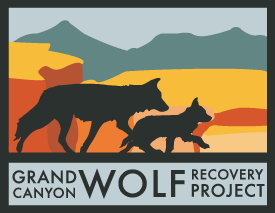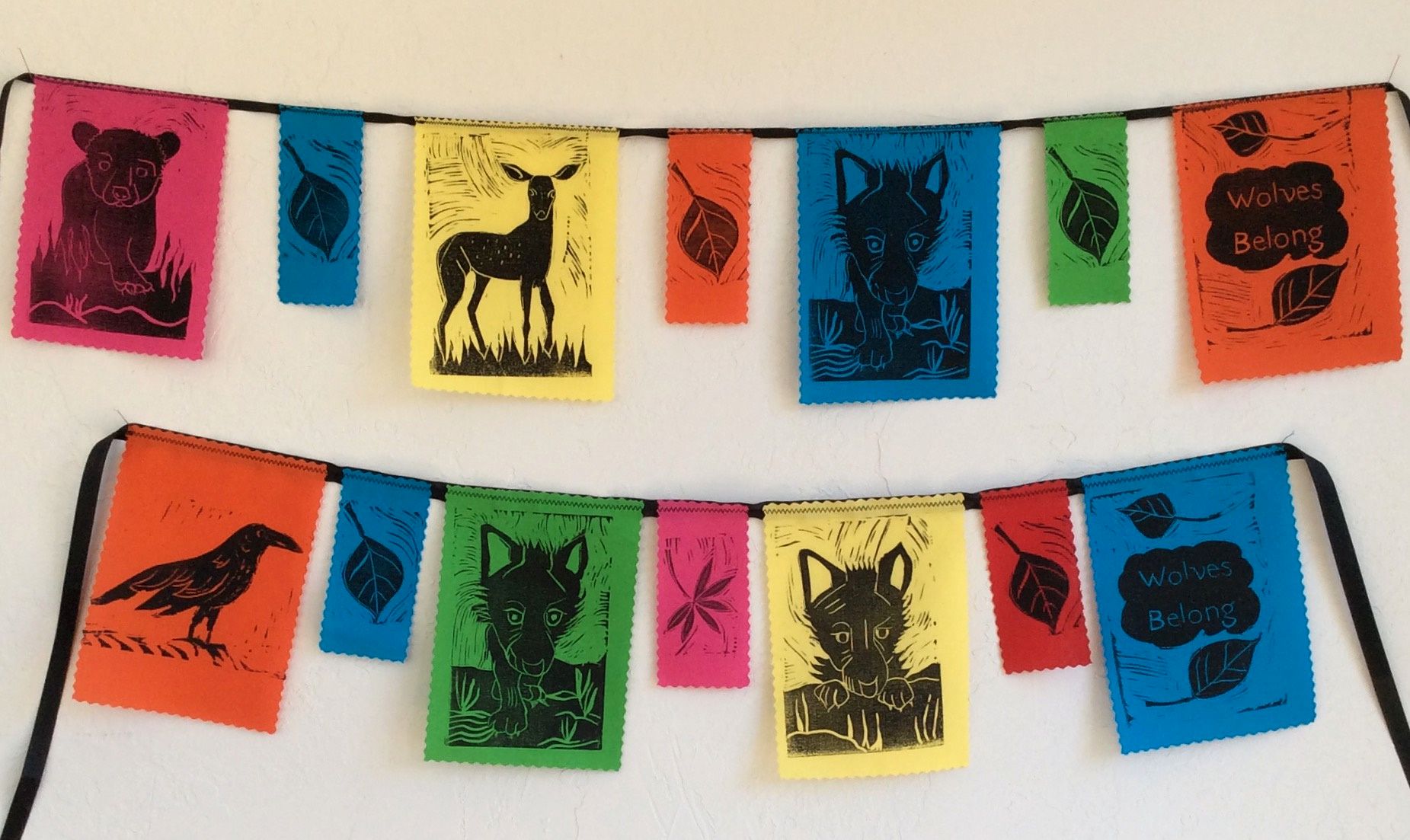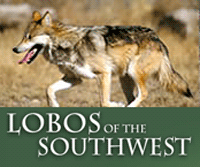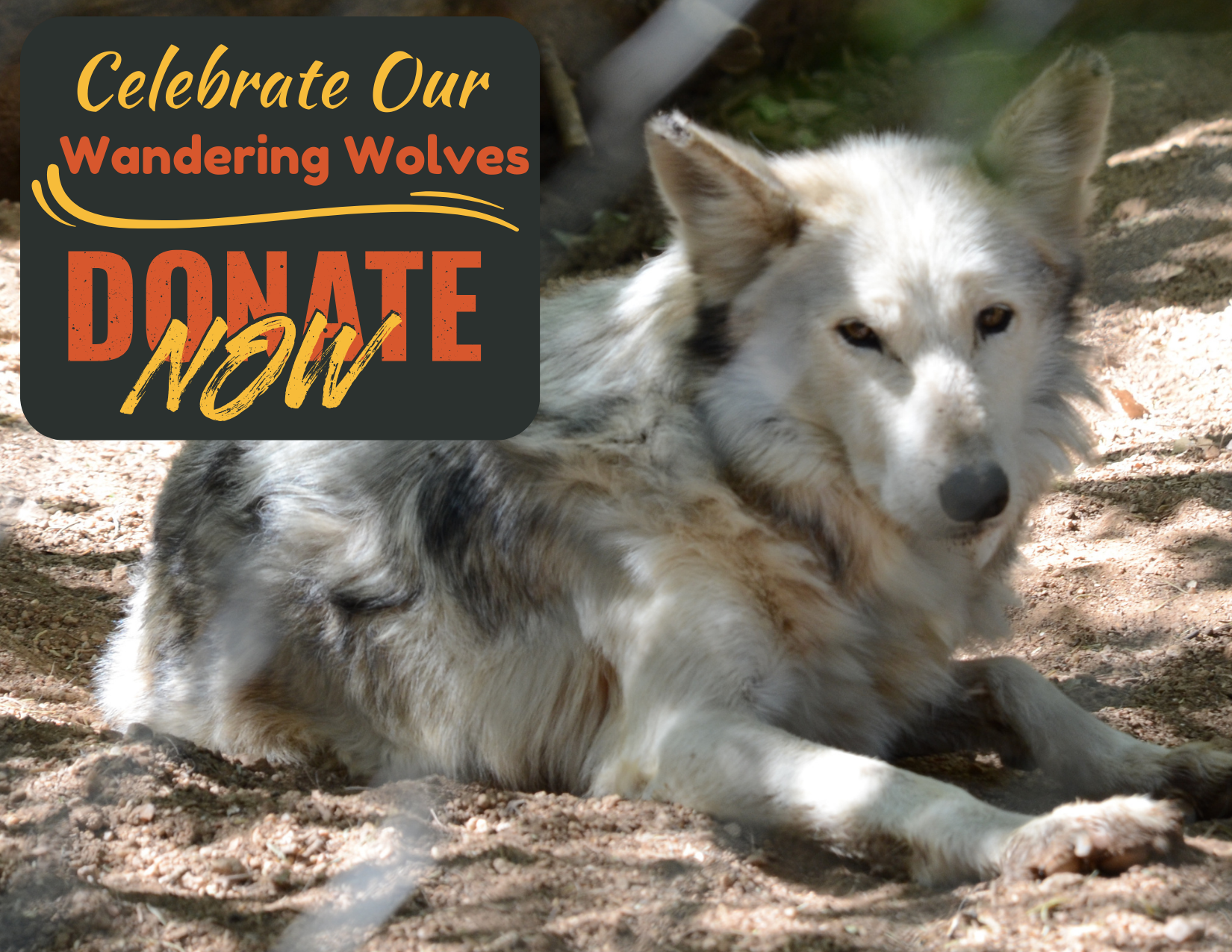Arizona Daily Sun (Original) Op-Ed Posted March 19, 2016 by Toni Prothero and Emily Renn
We at the Grand Canyon Wolf Recovery Project, a non-profit located here in Flagstaff, read with interest the editorial of Feb. 26, 2016 published in these pages and entitled "Top predator release requires more public education." Our mission since we were established in 2004 has been to restore wolves to the Grand Canyon region by building public support for recovery through education and outreach. We would argue that there is significant public support already in the region, in part due to the efforts of our organization and others, and that that support is based on knowledge of the benefits wolves bring to ecosystems.
A survey conducted in 2008 by Research and Polling Inc. found that 76 percent of respondents in Arizona agreed with the statement "Wolves are of benefit to the West and help the balance of nature." While it is true that many of us wolf-supporters are passionate about restoring wolves to the region, it is a passion that comes from listening to what science can tell us about the vital importance of top predators to healthy, balanced landscapes.
Each year since 2005 the Grand Canyon Wolf Recovery Project has done extensive outreach in the region through school and public presentations and tabling at local events in Flagstaff and at the Grand Canyon. Last year alone we reached approximately 20,000 people through our education and outreach programs. We have an informed public, ready and willing to have wild wolves back in our region. The wolf hearing that the US Fish and Wildlife Service recently held in Pinetop was well attended and those speaking were overwhelmingly in support of pending wolf releases, as they have been at every opportunity to address our federal and state officials. In addition, a poll conducted in 2013 of Arizona voters by Tulchin Research found that more than 7 in 10, 72 percent, supported restoring wolves to suitable habitat in northern Arizona.
We agree with the authors that public officials need to tone down the rhetoric, and, we would add, stick to the science. We take exception, however, to the authors' "go slow" approach. The public accepts wolves and wants to see them recover. In addition, it has been 18 years since the Mexican wolf was reintroduced to Arizona and the population has struggled to gain a secure future. The first-step target of 100 wolves restored to the wild in Arizona and New Mexico set in 1982 was finally met just last year, 33 years later, only to fall below that number this year. Because of delays in new releases, the population of wild Mexican wolves is now unacceptably inbred according to experts. All Mexican wolves alive today are the descendants of just seven Mexican wolves that remained to start the captive breeding program. These factors contribute to the species becoming increasingly highly endangered. It is foolhardy to continue to delay releases and risk extinction, so narrowly avoided before.
Now is the time for more releases.
Toni Prothero is the Education and Outreach Coordinator and Emily Renn is the Executive Director of the Grand Canyon Wolf Recovery Project





